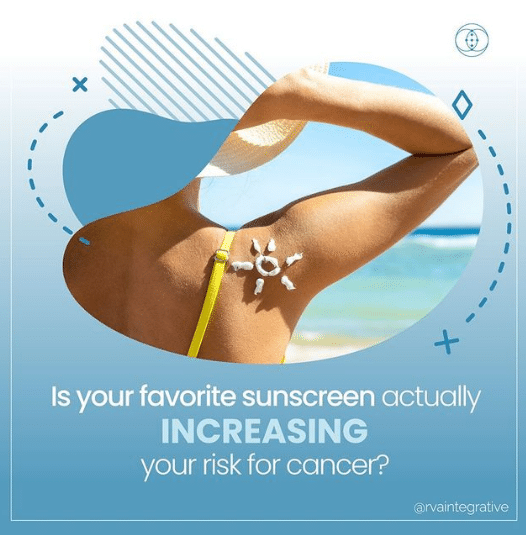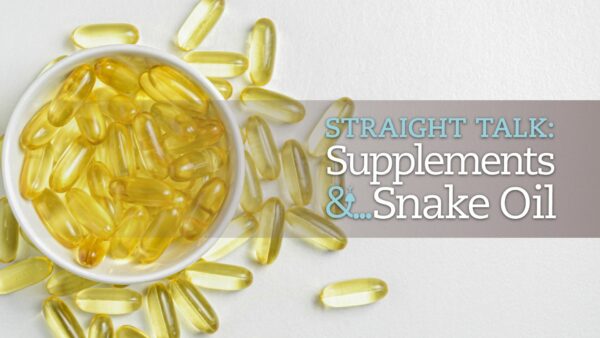Subscribe
Never miss out on new content from Dr. Hartman.
Ah, the sun. It’s something that lifts our spirits and results in so much joy—but it’s definitely been villainized over the past couple of decades. Sun worshippers have turned into sunscreen worshippers. Unfortunately, for most people, wise sun exposure basically means no sun exposure.
Unfortunately, for most people, wise sun exposure basically means no sun exposure.
Don’t get me wrong, I believe our time in the sun needs to be moderated. Skin cancer is the most common cancer in the United States. 1 in 8 people will get skin cancer in their lifetime and 1 in 50 will get melanoma. This makes skin protection and sunscreen important for everyone.
However, sun exposure is a tricky, delicate dance. We all absolutely need sun exposure for critical functions—and there’s a chance that by applying your favorite sunscreen, you’re actually increasing your risk for skin cancer. But we don’t want to throw all caution to the wind and not protect ourselves at all. You want to be sure that you’re still wearing the right sunscreen with the appropriate SPF for you that meets your needs.
Let’s get into the benefits of wise sun exposure, and then I’ll give my professional opinions on how getting just the right amount of rays can be achieved.
The Benefits of Sun Exposure

Put simply, the sun helps us make Vitamin D, and Vitamin D helps us live optimally.
Why is Vitamin D so important? It decreases the risk of skin cancers, melanoma, prostate cancer, colon cancer, heart disease, Alzheimer’s disease, and it’s shown to be the single biggest nutritional factor for severe COVID. Low D is also associated with Metabolic Syndrome, chronic inflammation, autoimmune diseases, and increased cardiovascular disease. Having ample Vitamin D stores is a critical factor in maintaining overall health.
Do I have your attention yet?
We’re experiencing an epidemic in Vitamin D deficiency due to (a) our avoidance of the sun, (b) working indoors, and (c) the use of sunblocks and sunscreens that prevent the production of Vitamin D in our skin. Ironically, by slathering on the sunscreen, we’re actually increasing our risk for skin cancer, as well as other cancers.
Ironically, by slathering on the sunscreen, we’re actually increasing our risk for skin cancer, as well as other cancers.

Graded Exposure: A Doctor’s Preferred Approach to Sun Time
So how do we safely manage wise sun exposure, without overexposing?
First, let’s talk about the amount of sun you need. A Minimal Erythema Dose (or MED) is how much sun exposure it takes for your skin to turn slightly red. Exposing 90% or greater of your skin to the sun until you get a MED will produce around 20,000 IU of Vitamin D in your skin. For white skin at the beginning of the season, this is about 15–20 minutes. For pigmented skin, it can be up to 45 minutes initially to receive the Minimal Erythema Dose.
For both myself and my family, I prefer graded sun exposure with protective covering and limiting sunblocks to high-risk burn areas. This allows our bodies to produce Vitamin D in our skin, yet prevents excessive sun exposure and sunburns.
This means is that during the beginning of the spring/summer season you only expose yourself to the sun for a limited amount of time (until MED is achieved), and then use protective clothing to cover up all other times. High-risk areas like your face, hands, arms, etc. should have a sunblock applied before or after your initial 20-minute exposure—whichever works best for you. This way you get your daily dose of Vitamin D, prevent excessive skin exposure to potential chemicals in skin protection products and prevent sunburns.
As your skin gets accustomed to the sun, you can expose more of your body for longer—always being aware of the Minimal Erythema Dose of sun.
You should also limit sun exposure during the times of day when the amount of UV radiation intensity is the highest, typically 10 am – 3 pm. For a map of up-to-date UV intensity for your area, visit the EPA site and type in your zip code to learn the UV intensity for your area.
We’ve been taught for so long to slap the sunscreen on before we even step outside our front door… but by carefully monitoring sun exposure with the right amount of sunblock, we allow our bodies to produce that critical Vitamin D.
Just remember, the best way on how to safely enjoy the sun is through graded exposure and wearing cover up clothing items.
I’m definitely not advocating to dismiss sunscreen, but we do need to be informed about what we are putting on our skin. Keep an eye out for my tips on how to choose the right sunblock! We’ll have more info hitting the blog soon.
Follow us on Instagram, YouTube, and Facebook for more functional medicine tips like these!
Portions of this article are republished with permission from The Institute for Functional Medicine. The original, printed article may be downloaded here.
A version of this article was originally published in May 2017.



